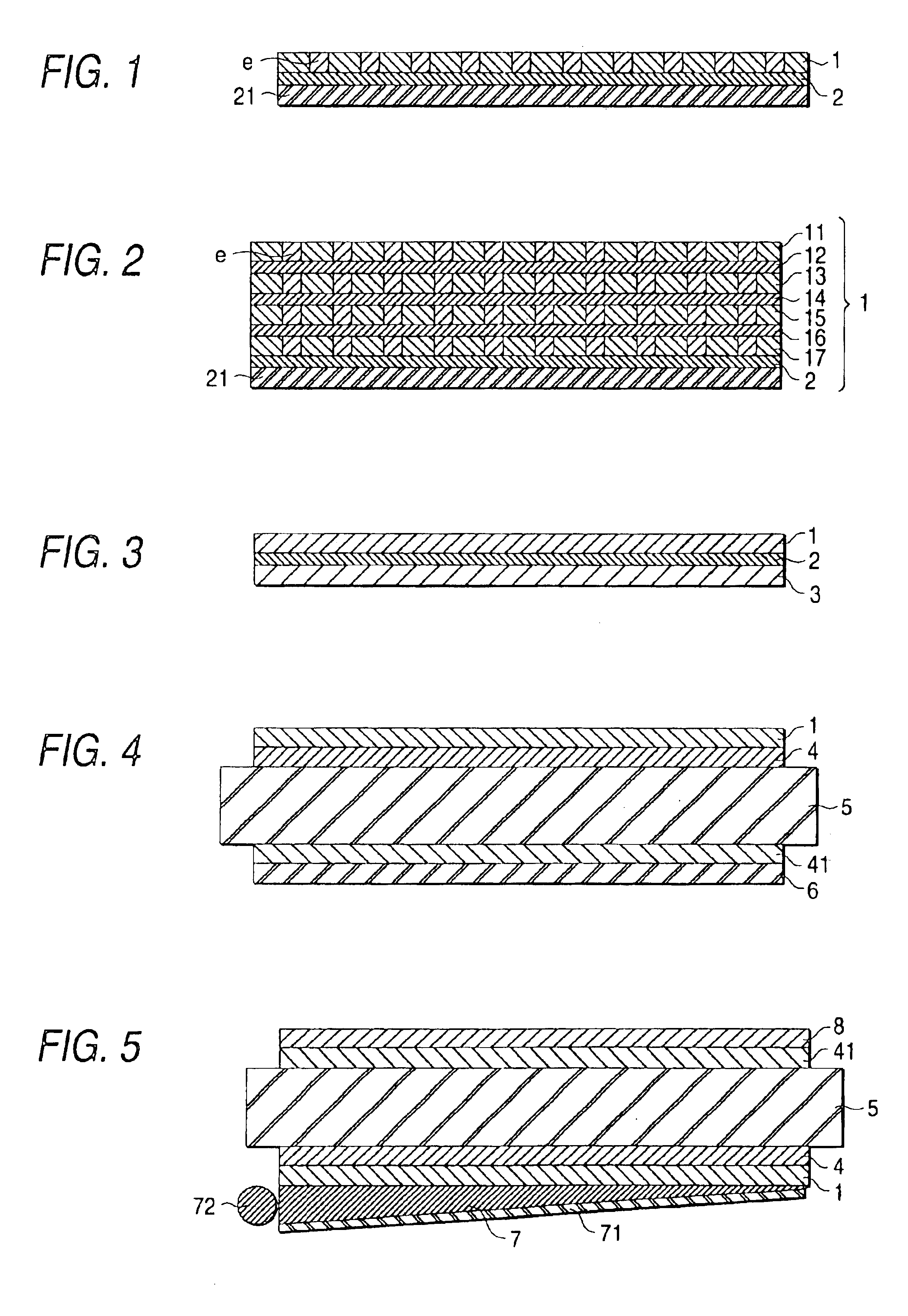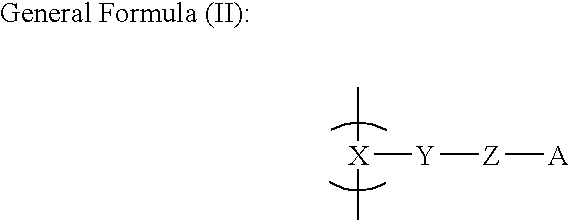Light diffusing plate, optical element, and liquid-crystal display
a technology of light diffusing plate and liquid crystal display, which is applied in the direction of optical elements, polarising elements, instruments, etc., can solve the problems of inapplicability to reflection type, inability to produce light diffusing plate, and inapplicability to conventional system to reflect type, etc., to achieve excellent thermal and chemical stability and suitability for practical use, easy production, and less absorbability
- Summary
- Abstract
- Description
- Claims
- Application Information
AI Technical Summary
Benefits of technology
Problems solved by technology
Method used
Image
Examples
example 1
A 20 wt % dichloromethane solution containing 900 parts (parts by weight; the same applies hereinafter) of a norbornene resin (Arton, manufactured y JSR Co., Ltd.) was mixed with 100 parts of a liquid-crystal polymer represented by the following formula. This mixture was used to obtain a 100 μm-thick film by casting. This film was stretched at 175° C. in a stretch ratio of 3. Thus, a light diffusing plate was obtained which consisted of a birefringent film having a refractive index difference Δn1 of 0.230 and a refractive index difference Δn2 of 0.029.
The birefringent film consisted of the norbornene resin as a film base and the liquid-crystal polymer dispersed therein as domains elongated along the stretch direction. The average diameter of these domains was measured through an examination with a polarizing microscope based on coloration by phase difference. As a result, the Δn1 direction length thereof was found to be about 6 μm.
example 2
Two birefringent films which were the same as that obtained in Example 1 were superposed and bonded to each other through a 20 μm-thick acrylic pressure-sensitive adhesive layer so that these films coincided with each other in Δn2 direction. Thus, a light diffusing plate was obtained.
example 3
A light diffusing plate was obtained in the same manner as in Example 1, except that a liquid-crystal polymer represented by the following formula was used. The light diffusing plate thus obtained consisted of a birefringent film having a Δn1 of 0.180 and a Δn2 of 0.032. In copolymerization for producing the liquid-crystal polymer, a monomer corresponding to units “a” and one corresponding to units “b” were used in amounts of 45 parts and 55 parts, respectively. The birefringent film consisted of the norbornene resin as a film base and the liquid-crystal polymer dispersed therein as domains elongated along the stretch direction (Δn1-direction length; about 6 μm).
PUM
| Property | Measurement | Unit |
|---|---|---|
| length | aaaaa | aaaaa |
| transmittance | aaaaa | aaaaa |
| thickness | aaaaa | aaaaa |
Abstract
Description
Claims
Application Information
 Login to View More
Login to View More - R&D
- Intellectual Property
- Life Sciences
- Materials
- Tech Scout
- Unparalleled Data Quality
- Higher Quality Content
- 60% Fewer Hallucinations
Browse by: Latest US Patents, China's latest patents, Technical Efficacy Thesaurus, Application Domain, Technology Topic, Popular Technical Reports.
© 2025 PatSnap. All rights reserved.Legal|Privacy policy|Modern Slavery Act Transparency Statement|Sitemap|About US| Contact US: help@patsnap.com



